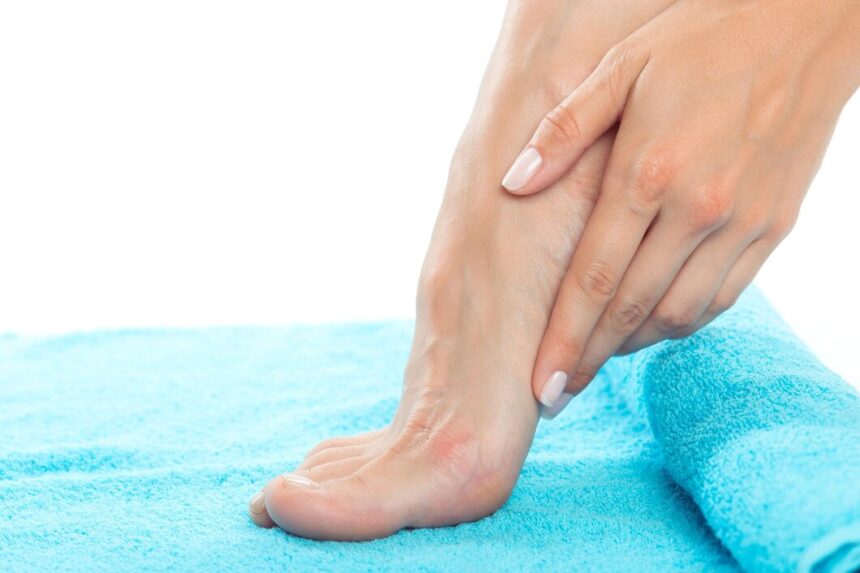Athlete’s foot, medically known as tinea pedis, is a common fungal infection that affects the skin on the feet. It is part of a group of conditions called dermatophyte infections, which thrive in warm, moist environments. While the name may suggest that only athletes are affected, anyone can develop athlete’s foot, particularly those who frequently wear tight shoes, share communal spaces, or have compromised immune systems. This article explores the symptoms, causes, and treatments for athlete’s foot dermatitis.
Symptoms of Athlete’s Foot Dermatitis
The symptoms of athlete’s foot can vary in severity and presentation. Common signs include:
- Itching and Burning: A persistent itching sensation, often accompanied by a burning feeling, is one of the first signs of athlete’s foot. This discomfort can worsen when the feet are warm or damp.
- Redness and Inflammation: Affected areas may appear red and inflamed. The skin can become swollen and sensitive, leading to further irritation.
- Dry or Peeling Skin: The skin on the affected areas may become dry and flaky, often peeling or cracking. This can lead to painful fissures, particularly between the toes.
- Blisters: Some individuals may develop blisters filled with fluid. These blisters can burst, leading to potential secondary infections.
- Unpleasant Odor: The fungal infection can cause a foul odor, particularly if sweat and moisture are trapped in shoes and socks.
- Nail Involvement: In some cases, athlete’s foot can spread to the toenails, leading to nail discoloration, thickening, or separation from the nail bed.
Causes of Athlete’s Foot Dermatitis
Athlete’s foot is caused primarily by fungi that thrive in warm, moist environments. Key factors contributing to the development of this condition include:
- Fungal Infection: The primary culprit is a group of fungi known as dermatophytes, particularly Trichophyton rubrum and Trichophyton mentagrophytes. These fungi can be found in communal areas such as locker rooms, swimming pools, and showers.
- Moisture and Humidity: Fungi thrive in warm, damp conditions. Wearing tight shoes or socks that retain moisture increases the risk of developing athlete’s foot.
- Poor Hygiene: Infrequent washing of feet and not drying them thoroughly after bathing can promote fungal growth.
- Weakened Immune System: Individuals with compromised immune systems, such as those with diabetes or HIV/AIDS, are more susceptible to fungal infections.
- Skin Conditions: Pre-existing skin conditions, such as eczema or psoriasis, can create an environment conducive to fungal infections.
- Close Contact: Sharing shoes, towels, or socks with someone who has athlete’s foot can lead to transmission of the infection.
Treatments for Athlete’s Foot Dermatitis
Treating athlete’s foot effectively involves a combination of over-the-counter and prescription options, as well as lifestyle changes:
- Topical Antifungal Medications: Over-the-counter antifungal creams, powders, or sprays (such as clotrimazole, miconazole, or terbinafine) are commonly used to treat athlete’s foot. These medications help eliminate the fungus and alleviate symptoms.
- Oral Antifungal Medications: In severe cases or when topical treatments fail, a healthcare provider may prescribe oral antifungal medications, such as fluconazole or itraconazole.
- Keep Feet Dry: Maintaining dry feet is crucial for recovery. Use absorbent socks, change them regularly, and choose breathable footwear to minimize moisture.
- Proper Hygiene: Wash feet daily with soap and water, and dry them thoroughly, especially between the toes. Regularly changing socks and shoes can help prevent reinfection.
- Avoiding Shared Spaces: Wearing flip-flops or water shoes in communal areas like pools and gyms can reduce the risk of contracting athlete’s foot.
- Home Remedies: Some people find relief using natural remedies, such as tea tree oil or apple cider vinegar, although these should not replace conventional treatment methods.
- Consult a Healthcare Professional: If symptoms persist or worsen, it’s essential to seek medical advice for a proper diagnosis and treatment plan.
Athlete’s foot dermatitis is a common fungal infection that can cause significant discomfort if left untreated. Understanding its symptoms, causes, and treatment options is essential for effective management. By adopting preventive measures and seeking appropriate care, individuals can minimize their risk of developing athlete’s foot and maintain healthy skin on their feet. If you suspect you have athlete’s foot, consult a healthcare professional for guidance on the best course of action.










